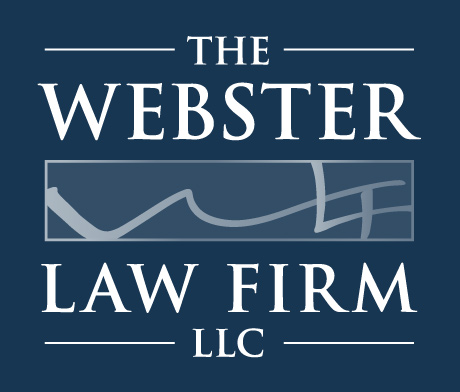If you watch any television, you have probably seen commercials from auto insurance carriers talking about how they can make insurance easier and that you only have to pay for the insurance coverage that you need for your car. So what does that mean? What type of insurance do you need?
Consider Your Assets
Insurance has many different types of coverage that can provide different types of protection. Beyond considerations about what type of protection you need, you also need to consider whether you have a need for greater amounts of insurance because you may have assets, like a home, that need to be protected from a possible lawsuit.
Property Damage Coverage
If you have no assets such as a home, etc., to protect, then your cost/benefit analysis should involve different considerations. At a minimum you will need property damage coverage, but there is property damage coverage for when you are the at-fault party (you caused the collision) as well as when you are the victim of the collision. If you are the at-fault party, you will need property damage coverage for the damage you caused to the other party’s vehicle no matter what. If you are not the party that caused the collision the other party will have coverage to compensate you, but you will also need to decide whether you should have separate coverage to repair/replace your own vehicle in the event that you are the person who caused the crash. Also, if you have a relatively new car that has a loan still being paid back, the loan company will require that you have separate property damage coverage as part of the contract and if this is your situation, you might also consider having loan coverage as well.
Evaluate How Much Your Car is Worth
If you don’t have a loan, you should evaluate how much that car is worth. The reason for this is that you will likely have a deductible (an amount of money you have to pay before your insurance takes over paying bills) to pay so if you have a 20 year old car that has a value of $2,000 and you have a $1,000 deductible, you may want to think twice about coverage for your own car. But if you bought it a few years ago and have kept it in good condition, having a property policy for your own car may be something you want.
Bodily Injury Coverage
The primary insurance you are required to have is called Bodily Injury (BI) coverage. This is essentially coverage that protects you and your assets in the event that you are the at-fault party in the collision. In the State of Colorado, our minimum insurance coverage is only $25,000 for BI coverage. This is horribly insufficient for nearly all motor vehicle collisions given that a trip to the emergency room averages between $5,000 to $10,000 (and can easily exceed that amount). I generally take the position that people shouldn’t have less than $100,000 in BI coverage protecting them. This is generally enough resources to compensate most victims of a collision and it is sufficient to protect you from having the other party look at whether you have assets that should be considered. That being said, if you have a home (at a minimum), you should absolutely have more insurance coverage to protect your asset. If you have a home, I generally take the position that you should have no less than $250,000 available for your personal protection. (For more information on Bodily Injury Coverage, click here)
Uninsured/Underinsured Coverage
Beyond BI coverage, you should make sure that you have uninsured and underinsured motorist coverage (UM/UIM). These coverages protect you, the insured, in the event that you are in a collision that is someone else’s fault. I can’t stress this one enough because far too often I have folks come in and the defendant only has $25,000 through their insurance (the BI) and when I look at the injured party’s policies, they too only have $25,000 in UM/UIM coverage (if you want to know more about UIM coverage, click here). This means that there are only a total of $50,000 in insurance available to compensate you for your injuries ($25,000 from BI + $25,000 from UM/UIM = $50,000). If you were in a serious collision and suffered significant injuries, this amount of money likely won’t come close to compensating you. So when you are looking at insurance, as I said above, you shouldn’t have less than $100,000 in BI protection and you certainly shouldn’t have less in UM/UIM. Insurers have to offer you UM/UIM in the same amount as the BI portion of the policy so they will automatically offer you the $100,000 in UIM with a $100,000 BI policy and they generally won’t offer more than you get in BI coverage.
Protect Yourself
One other problem I see is that people will have good BI coverage, but then will have reduced amounts, or they choose to waive coverage under a UM/UIM policy entirely. This makes no sense when you consider that the UM/UIM portion is to protect you, not the other party. That should make it some of the most important parts of your policy and you should always have that protection. Beyond that, UM/UIM is generally pretty cheap as well so it makes no sense for you not to have it.
Medical Payments Coverage
Finally, you should have med pay. Medical payments coverage is for the purpose of paying medical bills, even if you don’t have health insurance, until the policy is exhausted. It is required to be offered with a minimum amount of $5,000, but most insurers also offer it in larger amounts. The thing about med pay is that it is relatively inexpensive and when combined with health insurance, it can dramatically reduce the monetary stress of copays and deductibles. It is most beneficial when it is used in combination with health insurance to pay deductibles and copays. I generally don’t consider $5,000 to be sufficient to really be of benefit to the insured and I suggest that you get med pay coverage in amounts of at least $10,000 up to $25,000. I don’t recommend more than that because most of the time medical bills for the patient never get into the $50,000 or $100,000 range when they also have health insurance. Additionally, most health insurance policies stop requiring payment from the insured once the deductible is met so, again, there is no need for really high dollar med pay policies. You should look at the specifics of your health insurance policy to determine what is the appropriate level of med pay coverage you need. (If you would like to learn more about med pay coverage, click here)

